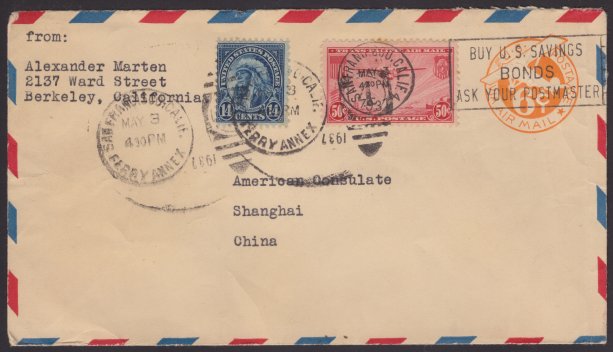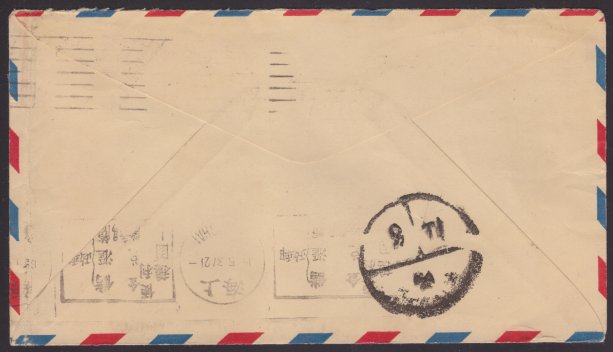Berkeley Cover
During the 1930s, the cost for domestic airmail service in the United States fluctuated between 5¢ and 8¢ per ounce. Stamps with higher face values generally found their way onto airmail only if the letters were heavier than average or if they were bound for international destinations.
This 6¢ airmail stamped envelope mailed to the American Consulate in Shanghai, China, in 1937 is an example of a cover that needed extra postage. Alexander Marten of Berkeley, California, paid 70¢ to send his letter, which bears copies of the 14¢ American Indian stamp and the 50¢ China Clipper stamp issued just three months before the cover was mailed.


We cannot know exactly what Mr. Marten sent to Shanghai, but it must have been important to him that it get there quickly. Pan American Airways’ Pacific Clipper service was relatively fast, but it was expensive, too. In the late 1930s, 70¢ was roughly equal to the average American’s hourly wage.1
The cover was postmarked in San Francisco, California, on May 3. The Chinese postal markings on the reverse suggest it may not have reached its destination until May 21, but its exact arrival date is unclear.
References
- United States. Pacific Clipper Postal History During World War II. Accessed 22 May 2011.
Published 2018-06-17 Last updated 2020-08-06